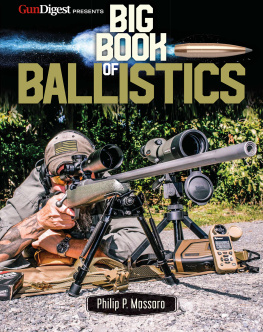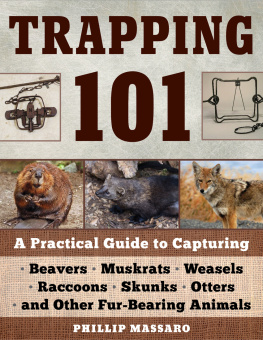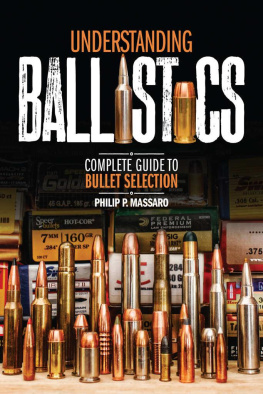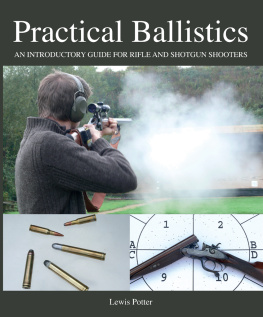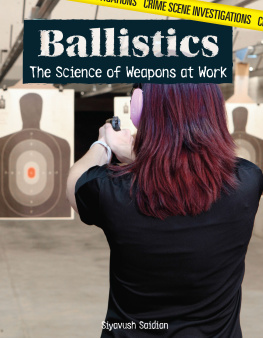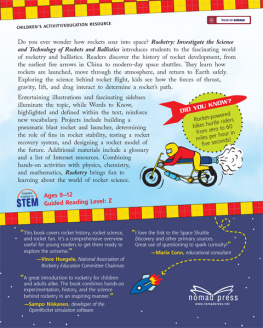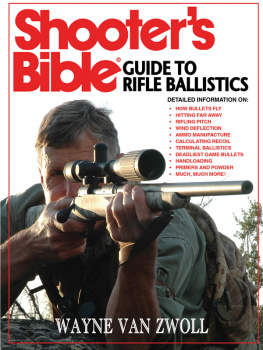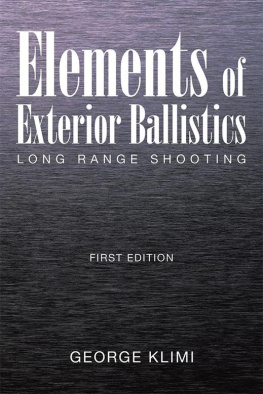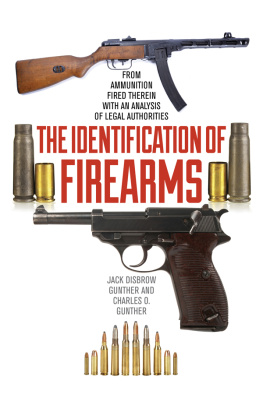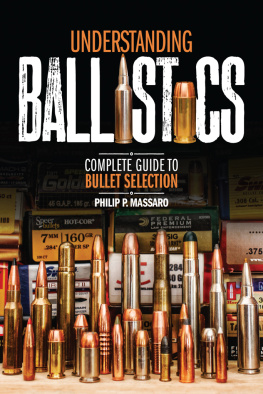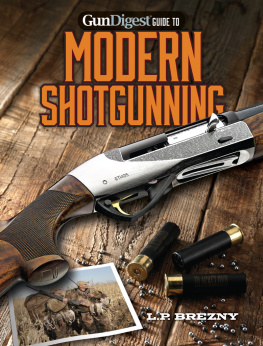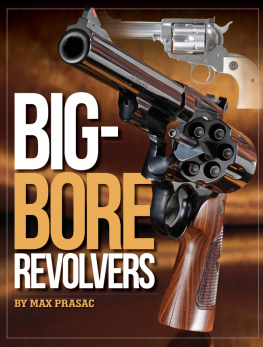Philip P. Massaro
Thank you for purchasing this Gun Digest eBook.
Sign up for our newsletter and receive special offers, access to free content, and information on the latest new releases and must-have firearms resources! Plus, receive a coupon code to use on your first purchase from GunDigestStore.com for signing up.
or visit us online to sign up at
http://gundigest.com/ebook-promo
DEDICATION
This book is dedicated to Tim Fallon, Doug Pritchard and the entire crew of the FTW Ranch in Barksdale, Texas, who have been more than kind in both word and deed, and who were instrumental in the development of this book. Without the SAAM Shooting School, I would still be in the dark ages.
CONTENTS
FOREWORD
In a life and career solely dedicated to hunting and shooting, it has been my pleasure to know most of the recognized experts and innovators in the industry. Among these are some of my very best friends, people with whom Ive forged lifelong professional relationships. We share the same passion for the shooting sports, run in the same crowds, and live similar lifestyles. We also enjoy a mutual and burning passion for sending bullets down the barrel of a good rifle at different targets, and for different purposes.
Among these men is Phil Massaro, head honcho of Massaro Ballistic Laboratories, LLC and the brainpower behind the book you are holding. A native of Upstate New York, (I forgave him for that long ago) Phil has been quickly rising through the ranks of the long list of skilled American gun writers. But it is Massaros knowledge of and ability to explain the confusing science of ballistics, where he pulls away from the rest of the field. Whether your target is flesh and bone, paper, or steel plate, the goal is to place your bullet, regardless of distance, weather conditions, or wind precisely where you want it to go. And regardless of your rifle, caliber, or ability to hold steady for the shot, understanding ballistics, and all that term entails, is the key to accurate shooting.
I make no claims to being a ballistics expert. In fact, I shy away from deep conversations about the subject as to not highlight my ignorance. Oh, I can usually drive my bullet to a target in the hunting fields of the world, but it is practice, combined with an intimate knowledge of my personal rifles and my own limitations that has filled my trophy room over the years.
But I like to shoot, and I like to learn, and Phil is a guy with which I greatly enjoy doing both. Recently, at the beautiful FTW Ranch in central Texas, Massaro and I joined our good friends Tim Fallon and Doug Dog Prichard for a four-day training session at the now famous SAAM Precision Shooting School.
SAAM stands for Sportsman All-Weather, All-Terrain Marksmanship, and there is no finer training ground for the serious hunter and shooter to be found. Massaro and I were both officially on hand in the role of students under the tutelage of Prichard, who is one of the finest shots and training experts this countrys military has ever produced. Actually, while I really was a student, Massaro could have run the course himself as a trainer, so thorough is his understanding of both the science, and mechanics of accurate shooting. We teamed up for the course and helped each other out with range and wind estimates, target conformation, and calling hits and misses.
I left my ego at the ranch gate, and really dedicated myself to learning on this trip. With both Prichard and Massaro overseeing my efforts in both the classroom and on the ranges, I enjoyed the most enlightening four days in my shooting career. Indeed, a better understanding of ballistics was the key to my learning. And that is exactly what Big Book of Ballistics provides: a wealth of easy to understand information on the world of accurate shooting.
Massaro writes like he talks, and his goal of providing understandable information in real world terms hits the target. He skillfully unravels the science of interior, exterior and terminal ballistics, and reveals methods for accurate shooting which will make sense to both SEAL sniper, and serious big-game hunter.
Between these covers you will learn about trajectory, wind deflection, interior ballistics and barrel effects including twist rates, bullet profiles, sectional density and bullet coefficient, terminal ballistics and modern improvements in projectiles, spin drift and Coriolis effect, as well as improved gear for todays shooter. But far more importantly, you will understand what you read! Thats where this book shines.
Massaros contributions to publications such as Gun Digest, American Hunter, and GameTrails is a testament to the fact that he regularly puts his knowledge to use in the game fields. In fact, this is a driving theme you will see revealed as you turn the pages of this book that understanding the principals of ballistics is the most important step in becoming a successful and ethical hunter.
I have seen Phil Massaro put a precise hole in the shoulder of a Cape buffalo, and I have seen him center punch a 20-inch steel plate at 1,250 yards. Both shots were sent with equal confidence from a man who makes a habit of practicing what he preaches when it comes to shooting.
Some books are tilted toward serious teaching, while others are more for entertainment. Big Book of Ballistics is a unique blend of the two, and both purposes will have been fully served between the first page and the last.
Bwana Massaro has preached, and I on bended knee have heard and learned.
Dave Fulson, Safari Classics
INTRODUCTION
Ballistics is defined by Merriam-Websters Dictionary as 1. The science of the motion of projectiles in flight, 2. The study of the processes within a firearm as it is fired. This book will expound on both of those definitions.
I was taught at an early age that knowledge is power, and I firmly believe that this statement applies to shooters, especially in this day and age of advanced cartridges, rifles and projectiles. When we venture forth to use our firearms, a working knowledge of mechanical functions of both the gun and the ammunition will only enhance our ability to hit the chosen target, be it a game animal or paper bullseye, a metal plate or silhouette target. The rapid advances of firearms technology in the 19th century forced our forefathers to adapt to a new technology; within the span of one lifetime, flintlocks gave way to percussion cap guns, and to metallic cartridge repeating rifles. The simple, round lead ball was pushed aside for Minie balls, and ultimately jacketed bullets. The 20th century saw a similar evolution: cordite and other early propellants were replaced by single- and double-based nitrocellulose powders, and the radical advances in bullet technology in the latter half of that century produced many new and wonderful designs, so many that the choices can sometimes be dizzying.
The study of ballistics can be a rather daunting endeavor. Many people prefer to remain happily ignorant of the particulars, just enjoying a firearm in the manner that they know how to use it, and thats fine if they choose to do so. Others, like myself, are very interested in what makes things tick, in hopes to better the performance at the target range or in the hunting fields. However, the deeper one delves into the study of a spinning projectile and the effects of our atmosphere upon that projectile the more things start to sound like Chinese algebra. Quantifications are something we humans thrive on, and the mathematical formulae used to represent the speed, energy and attributes of a particular projectile are effective, but like most things in life, they dont tell the complete story.

